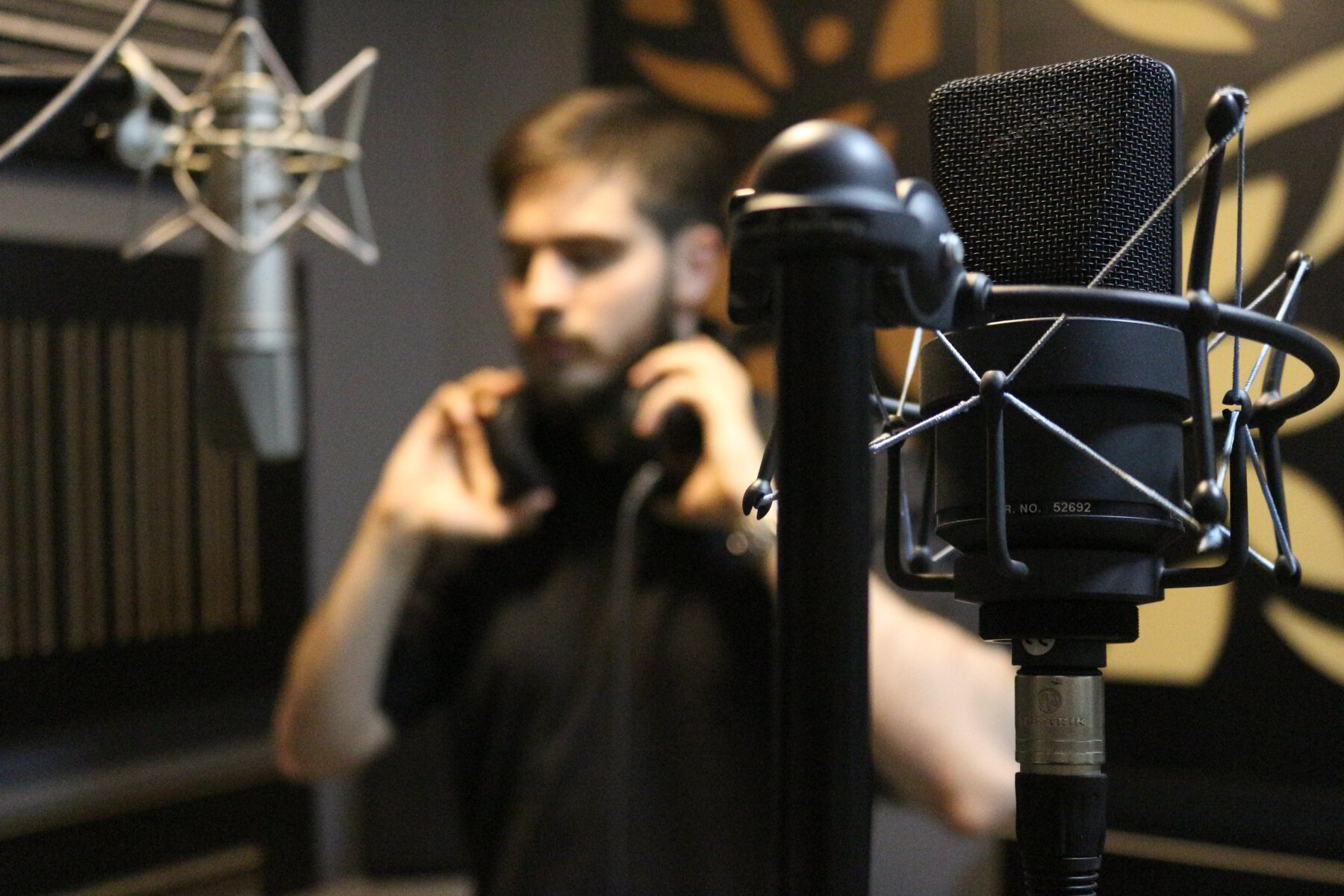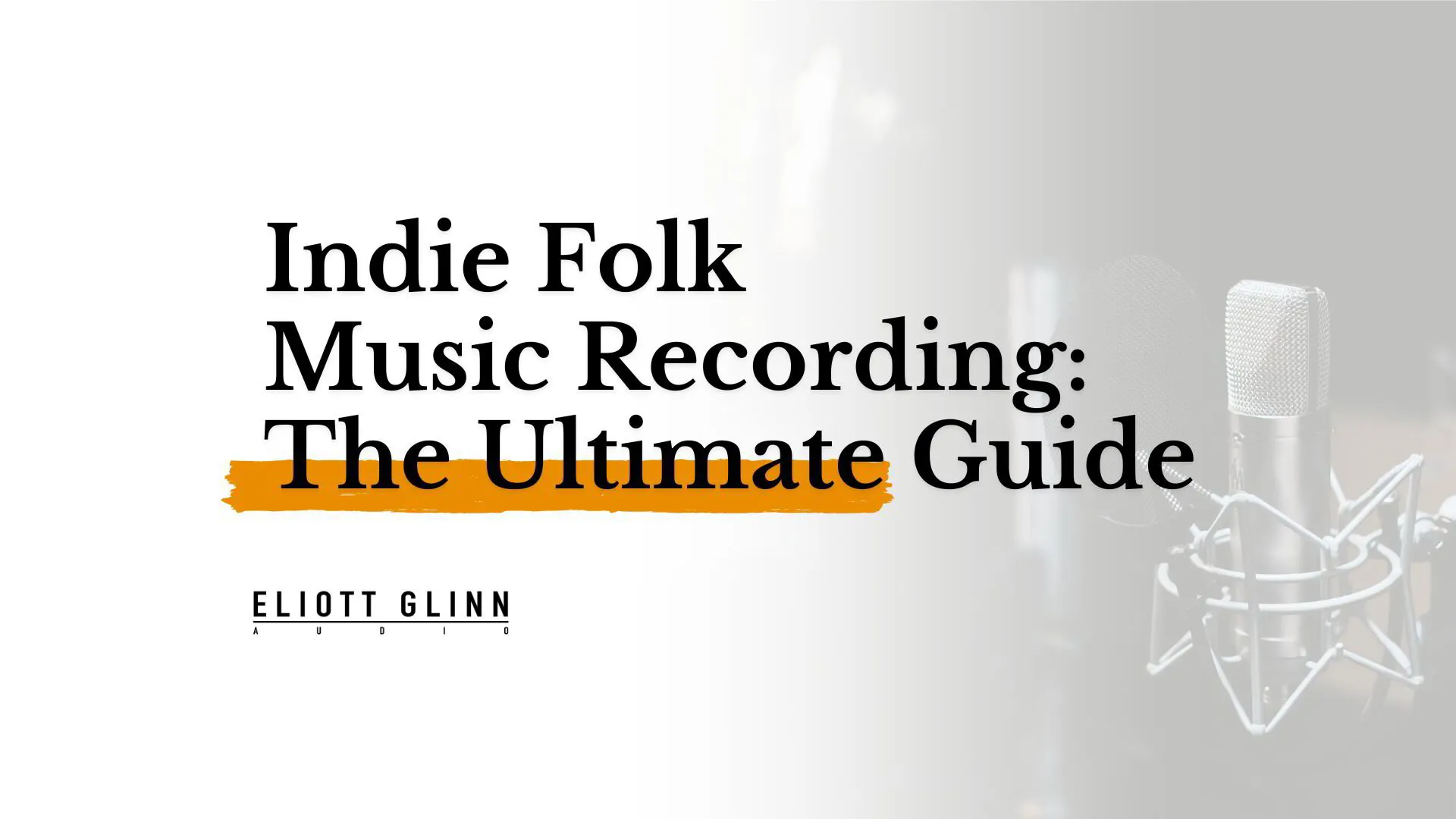Welcome to our ultimate guide on indie folk music recording. This guide serves as a resource for anyone fascinated by the rich tapestry of indie folk music and looking to embark on their own recording journey. We delve into the history and characteristics of the genre, planning your recording, techniques for capturing the unique indie folk sound, and even promoting your music.
Regardless of whether you are a budding musician or a seasoned artist, this guide provides you with valuable insights to help you navigate the indie folk landscape and create a captivating indie folk masterpiece. So, let's dive into the world of indie folk music recording.

Understanding Indie Folk Music
History of Indie Folk
Indie folk has become a significant presence in the music industry, gaining a loyal following and critical acclaim for its distinctive sound and style. The genre combines the storytelling of traditional folk music with the raw energy of rock and the emotional depth of country.
Indie folk artists often employ acoustic instruments such as guitars, banjos, and mandolins, creating a sound that is both rustic and contemporary. The genre has also been influenced by a wide range of musical traditions, including Celtic, Appalachian, and Americana.
Indie folk has become a haven for independent artists who seek creative freedom and choose to bypass the traditional music industry models. These artists often record and distribute their music independently, relying on social media and word-of-mouth to grow their fan base.
As the indie folk movement continues to evolve, it remains a vital force in the music world, attracting both established artists and emerging talent. Its unique sound and ethos have inspired countless musicians, listeners, and music fans around the world.
Characteristics of Indie Folk Music
Indie folk music has become an increasingly popular genre in recent years, with its stripped-back, raw sound resonating with audiences around the world. What sets indie folk apart from other genres is the way it prioritises authenticity and emotion over flashy production techniques and slick performances.
The lyrics of indie folk songs are often deeply personal, exploring themes of love, loss, and the complexities of the human experience. The raw, acoustic sound of indie folk music reflects this emotional depth, with artists often relying on nothing more than their voice and an acoustic guitar to convey their message.
In addition to the acoustic guitar, many indie folk musicians incorporate traditional folk instruments into their sound. The banjo, for example, is a staple of the genre, adding a twangy, percussive element to the music. The harmonica is another popular choice, infusing songs with a mournful, bluesy quality. Other instruments commonly used in indie folk include the mandolin, fiddle, and accordion, all of which contribute to the genre's timeless, rustic sound.
Despite its roots in traditional folk music, indie folk has evolved to encompass a wide range of influences and styles. Some artists blend elements of indie rock or country into their sound, while others draw inspiration from Celtic or Appalachian folk music. What unites all indie folk musicians, however, is a commitment to expressing themselves honestly and authentically through their music.

Planning Your Indie Folk Recording
Setting the Mood
To create a truly perfect indie folk track, one must delve deep into the heart and soul of the music. This genre is all about telling stories that resonate with the listener on a deeply emotional level. It's about painting a picture with words and melody that transports the listener to another time and place. Whether it's a tale of love lost or a story of hope and redemption, the right mood is essential to capturing the essence of indie folk.
When crafting an indie folk track, the lyrics and melody must align with the atmosphere you want to create. The words should be carefully chosen to convey the emotion you want to evoke, and the melody should be equally as evocative. This is not a genre that relies on complicated production or flashy instrumentation. It's about simplicity and authenticity, letting the story and the emotion shine through.
To set the right mood for your indie folk track, you must understand the essence of the genre. Take inspiration from the greats who have come before, from Bob Dylan to Joni Mitchell to Bon Iver. Listen to their music and pay attention to how they blend lyrics and melody to create an unforgettable atmosphere.
Choosing the Right Instruments
Acoustic instruments play a crucial role in the creation of indie folk music, as they provide a raw, organic sound that perfectly captures the essence of the genre. Unlike their electronically amplified counterparts, acoustic instruments are capable of producing a range of nuanced tones and textures that are often impossible to replicate through mechanical means.
From the gentle strum of an acoustic guitar to the soulful melody of a violin, these instruments possess a distinct character that evokes a sense of nostalgia and rustic charm. With their charming and intimate sound, acoustic instruments lend a unique warmth and authenticity to the music, creating an atmosphere that is both soothing and captivating.
Whether it's the soft plucking of a banjo or the warm resonance of a cello, the use of acoustic instruments in indie folk music is a testament to the enduring power of timeless, organic sounds.

Importance of Vocal Harmonies
In the world of indie folk music, vocal harmonies are more than just another element of a song. They are an essential part of the genre, and one that many musicians and fans alike hold dear. What sets indie folk apart from other types of music is its emphasis on storytelling and emotional authenticity. And when it comes to conveying those feelings, nothing does it quite like the human voice.
Singing in harmony is a way for indie folk artists to create a sense of unity and connection with their listeners. It's a way to make the music feel more intimate, as if the listener is being sung to by a group of close friends rather than just one person. The harmonies themselves can range from simple and straightforward to complex and intricate, but they all serve the same purpose: to add depth and richness to the music.
Beyond the technical aspects of vocal harmonies, they also play a crucial role in the storytelling of indie folk music. Whether it's a group of singers coming together to tell a story from different perspectives or a solo artist layering their own voice to create a haunting echo effect, harmonies have the power to make lyrics more poignant and impactful.
Recording Techniques for Indie Folk Music
The Home Studio Set-up
Gone are the days when one had to spend a fortune to record high-quality music in a professional studio. With the advent of technology, it's now possible to achieve the same level of recording excellence from the comfort of your own home.
Setting up a home studio has become more accessible and affordable now than ever before. All you need is a few basic pieces of equipment, such as a good-quality microphone, a sound interface, and recording software, and you can start creating your music in no time.
A good-quality microphone is essential for capturing the nuances of your music. There are many types of microphones available in the market, ranging from condenser to dynamic. Each has its own unique characteristics and is suitable for different types of music. So, do your research and choose one that fits your needs and budget.
A sound interface is the device that connects your microphone to your computer. It converts the analog signal from your microphone into a digital signal that your computer can process. A good sound interface can make a huge difference in the quality of your recording. Look for one that has high-quality preamps and converters to ensure that your recordings sound clear and natural.
Recording software is the final piece of the puzzle. There are many options available, ranging from basic to professional-grade software. Choose one that fits your needs and budget. Some software even includes virtual instruments and effects, which can help you create a full band sound without needing to hire additional musicians.

Recording Acoustic Instruments
When it comes to recording acoustic instruments, mic placement plays a vital role in capturing the purest and most authentic sound possible. The placement of the microphone can drastically affect the tonal quality, clarity, and overall character of the instrument being recorded.
It is crucial to experiment with different microphone positions to find the most optimal placement that best suits the specific instrument and desired sound. For instance, placing a microphone too close to the instrument can cause it to sound too harsh and overpowering, while placing it too far away can result in a distant and muddy sound.
The positioning of the microphone can also change depending on the type of room being used for the recording. A good understanding of microphone placement techniques, room acoustics, and the characteristics of different instruments is essential for achieving the best possible sound quality and ensuring that the true essence of the instrument is captured and emphasized in the final recording.
Capturing Vocal Harmonies
Recording vocal harmonies can be a challenging task that requires a great deal of precision and attention to detail. It is essential to ensure that each voice in the harmony is distinctly heard, while simultaneously maintaining a balanced and cohesive overall sound.
Achieving this delicate balance requires careful consideration of a variety of factors, including vocal range, pitch, and timbre. Each voice must be positioned and mixed in such a way that it complements the other voices in the harmony and contributes to the overall sound of the recording.
Additionally, it is important to carefully monitor levels and adjust settings as necessary to ensure that each voice is recorded at the appropriate volume and with the appropriate levels of compression and EQ. With the right approach and a focus on precision, it is possible to create stunning and unforgettable vocal harmonies that will elevate any recording to the next level.
Mixing and Mastering Your Indie Folk Record
Mixing Techniques for Indie Folk
The mixing stage of creating indie folk music is crucial for achieving the desired sound. During this stage, it is important to balance the tracks so that no one instrument or vocal is overpowering another. This can be done by adjusting the levels of each track, ensuring that all elements of the song are heard equally.
In addition to balancing the tracks, it is also essential to adjust the frequencies. This means enhancing or attenuating the bass, midrange and treble frequencies to create a pleasant and harmonious sound.
Adding effects can also be a great way to enhance the song, but it should be done with caution. Overusing effects can take away from the raw, authentic sound that is so important in indie folk music.
The goal of mixing indie folk music is to preserve the raw, authentic sound that is characteristic of the genre. By balancing the tracks, adjusting frequencies and adding effects if necessary, you can create a beautiful and harmonious mix that perfectly captures the essence of indie folk.
Mastering the Art
Mastering is the ultimate stage of the music production process, where a professional sound engineer puts the final touches on your track. It is the last chance to perfect the sonic character of your music, ensuring that every element is crystal clear, balanced, and cohesive.
The mastering process involves a range of techniques, such as equalization, compression, limiting, and stereo enhancement, which are used to refine the sound quality. The aim is to create a final mix that is not only pleasant to the ears but also perfectly translates across different playback systems, including speakers, headphones, and mobile devices.
Additionally, the mastering engineer works on ensuring consistent volume levels throughout the track, making sure that the quieter parts are audible and the louder parts are not distorted. Lastly, mastering involves preparing the track for distribution, which means adding metadata, creating a final master copy, and ensuring that the track meets the technical standards required by different platforms and streaming services.

Promoting Your Indie Folk Music
Social Media and Online Platforms
As an independent artist, promoting your music is just as crucial as creating it. In today's digital age, having a strong online presence can make all the difference in getting your music heard. Social media platforms such as Facebook, Instagram, and Twitter can be used to build a fan base and connect with potential listeners.
Creating engaging content such as music videos, behind-the-scenes footage, and live performances can help to generate buzz and keep your fans engaged. Music streaming services like Spotify and Apple Music can also be incredibly valuable tools for independent artists to get their music in front of a wider audience.
By optimizing your profile and playlists, and engaging with listeners, you can increase your chances of being discovered by new fans. YouTube is another fantastic platform for promoting your indie folk music. It allows you to visually showcase your music through music videos, live performances, and vlogs.
Live Performances and Tours
Live performances are not only a crucial aspect of indie folk music, but they also hold a special place in the hearts of both the artists and their fans. These performances provide a platform for the artist to deliver their music in its rawest, most organic form, devoid of any studio tricks or auto-tuning.
The stripped-back nature of indie folk music lends itself particularly well to live performances, where the focus is on the lyrics and the emotions that they evoke. The intimate connection between the artist and the audience is palpable, as the artist bares their soul and lays it all out on the stage.
The audience, in turn, reciprocates this vulnerability by immersing themselves in the music, singing along to their favorite songs and swaying to the rhythm. The result is an almost spiritual experience, where the emotive essence of the genre is allowed to truly shine, and both the artist and the audience are left with a profound sense of connection and catharsis.
In a world where technology and digital media reign supreme, live performances remain a vital reminder of the power of human connection and authentic expression.
Conclusion
Indie folk music is a genre deeply rooted in authenticity and emotion. Whether you're just starting out or you're an experienced musician, understanding its history, characteristics, and recording techniques is crucial to producing a captivating indie folk track. Remember, creating music is a journey, not a destination. Embrace each step, and most importantly, enjoy the process.
FAQs
1. What is the main difference between indie folk and traditional folk music?
Indie folk is a subgenre of folk that emerged in the 90s. It combines elements of traditional folk, rock, and country music, and is known for its raw and emotive sound.
2. Do I need expensive equipment to record indie folk music?
While having good-quality equipment can enhance the sound quality of your recording, it's not a necessity. Many indie folk artists start with a basic home studio set-up and gradually upgrade their equipment as they progress.
3. What are some popular indie folk artists?
Some popular indie folk artists include Mumford & Sons, Fleet Foxes, and Bon Iver.
4. How can I promote my indie folk music?
You can promote your music through social media platforms, music streaming services, YouTube, and live performances.
5. What's the importance of live performances in indie folk music?
Live performances create an intimate connection between the artist and the audience. They allow the emotive essence of indie folk music to truly shine.
